| HOME |
|---|

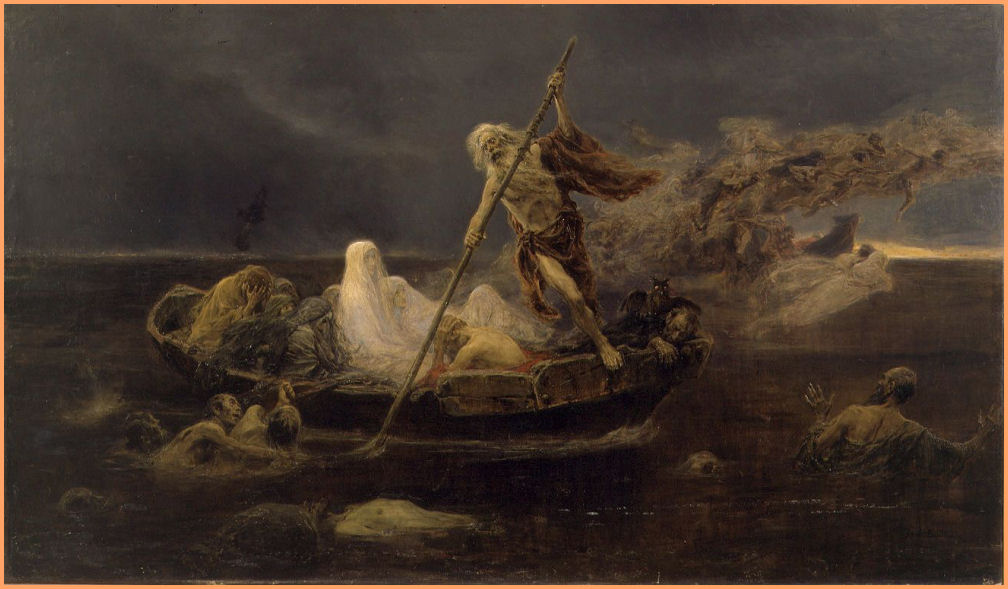
La Barca de Caronte (Charon's Boat)- Jose Benillure Y Gil - 1919
| HOME |
|---|


Beyond the vast depths of Neptune's oceans, over the edge of the world, lay the underworld - Tartarus - the land of the dead, from which no-one returned. The dark lord that ruled this dark place was Hades, another son of Saturn, brother to Jupiter and Neptune. He was the most feared of all the gods. Afraid that saying his name might draw his attention, he was referred to obliquely as "Pluton", which meant the rich one, alluding to tales of his netherworld being filled with the riches of the dead. Over time, his name became Pluto.
So, in 1930, 84 years after the discovery of Neptune, when an object was discovered even farther away, in the true netherworld of the solar system, almost five billion miles away, it seemed only appropriate to call it the ninth planet in the solar system, and name it after Pluto, god of the netherworld. But Pluto is so far away, even the Hubble Space Telescope cannot even start to resolve its features. It wasn't until 2015, when NASA's New Horizons spacecraft, the fastest spacecraft ever built, completed a nine year journey to the outskirts of the solar system, that the world was able to see the face of Pluto for the first time.
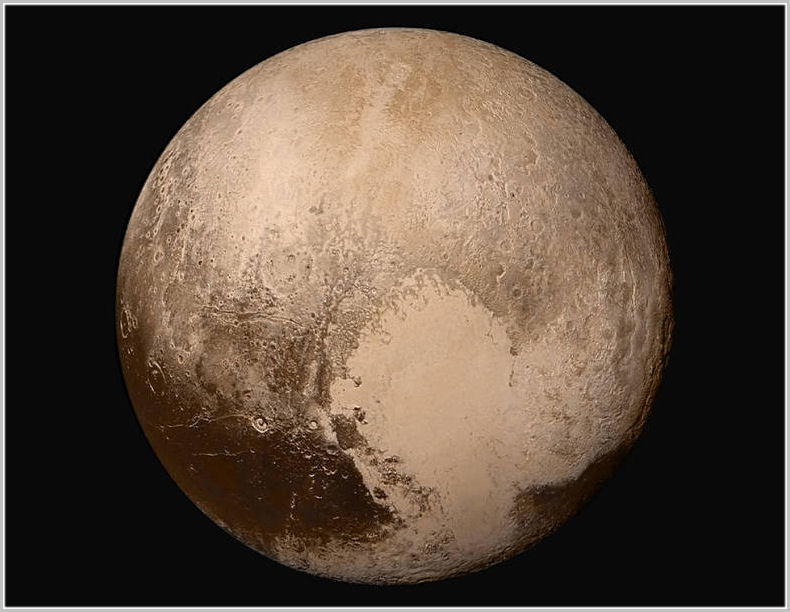
And so it remained for the next 70 years. We lived in a solar system with nine planets. The word "planet" is Greek, and means wanderer, alluding to the fact that the planets appear to wander among the fixed stars. Pluto was discovered when technology developed telescopes able to detect the wandering movement of such a small object so far away. But technology is nothing if not relentless, and telescopes eventually moved out of Earth's atmosphere into space, where they could see a lot more clearly, and lo and behold, more "wanderers" were discovered beyond Pluto, one or two of which were just about the same size as Pluto. So now what? Should these new wanderers be classified as planets as well? By 2005 there were five of them. Was the number of planets just going to keep going up as new wandering objects were discovered out in the icy cold far-flung fringes of our solar system? In scientific communities the debate raged, from one extreme to the other.
Enter the International Astronomical Union. The IAU was founded in 1919, for just this purpose:
"to bring together distinguished astronomers from all nations of the world to promote and safeguard the science of astronomy in all its aspects through international cooperation."
The IAU is recognised world wide as the official spokes-organization for the global astronomical community, and in August 2006 they voted, and made their decision. The decision was not to keep adding planets to the solar system, but to define specific conditions which would limit the number of planets. To be an official planet, an object now has to do more than just wander. It must meet four criteria.
1. It must be in orbit around the Sun.
2. It must have sufficient mass for its self-gravity to overcome rigid body forces so that it assumes a hydrostatic equilibrium (nearly round) shape.
3. It must have cleared the neighbourhood around its orbit.
4. It must not be a satellite.
All of the original nine planets do all these things except Pluto. Pluto does not fulfill condition three. It has not cleared the neighbourhood of its orbit, as all the other planets have. The neighbourhood of Pluto's orbit is full of debris left over from the formation of the solar system, some of which is close to the size of Pluto itself. Pluto is in fact a member of a large group of objects now referred to as Trans-Neptunian, or Kuiper Belt objects that all circle the Sun in highly elliptical orbits, like comets. The IAU has designated a new category for the largest of these objects. They are to be called Dwarf Planets, of which the former planet Pluto is to be the first. As of September, 2011, the I.A.U. officially recognizes five dwarf planets, including Ceres in the Asteroid Belt, and Eris, Pluto, Makemake, and Haumea, in the Kuiper Belt. Sedna and Quaoar, also in the Kuiper Belt, are still awaiting official designation. The NASA artist rendering below accurately shows the sizes of the largest known Kuiper Belt objects, relative to each other and Earth.
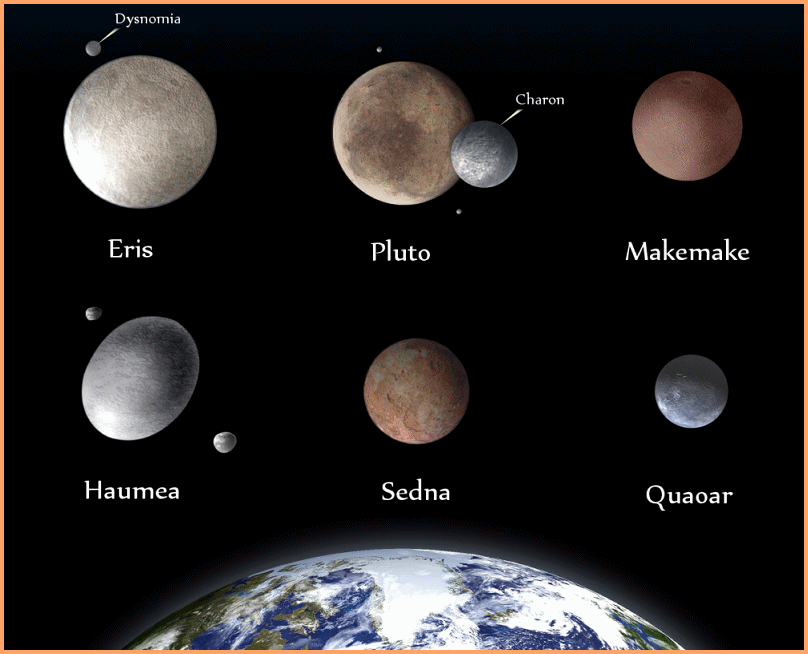
But although Pluto may not be an official planet anymore, it is still the ruler of the netherworld of the solar system, the Kuiper Belt, that ring of small, dead bodies that circle the edge of the solar system (like the lost souls of Tartarus,) and extends out to a distance of 9.3 billion miles from the Sun. Much like asteroids, Kuiper belt objects are remnants of the early solar system that never coalesced to form planets. While asteroids are largely rocky however, Kuiper belt objects, being so far from the heat of the sun, are composed largely of ices, sometimes with rocky cores, like comets.
With a diameter of only 1,430 miles (2,288 kms), Pluto is smaller than seven of the moons in the solar system, including Earth's moon. Its orbit is highly elliptical, bringing it as close as 2.7 billion miles from the Sun (inside the orbit of Neptune), and taking it as far away as 4.6 billion miles. Pluto's orbit also does not lie in the same plane as the other planets, as shown in the graphic below.
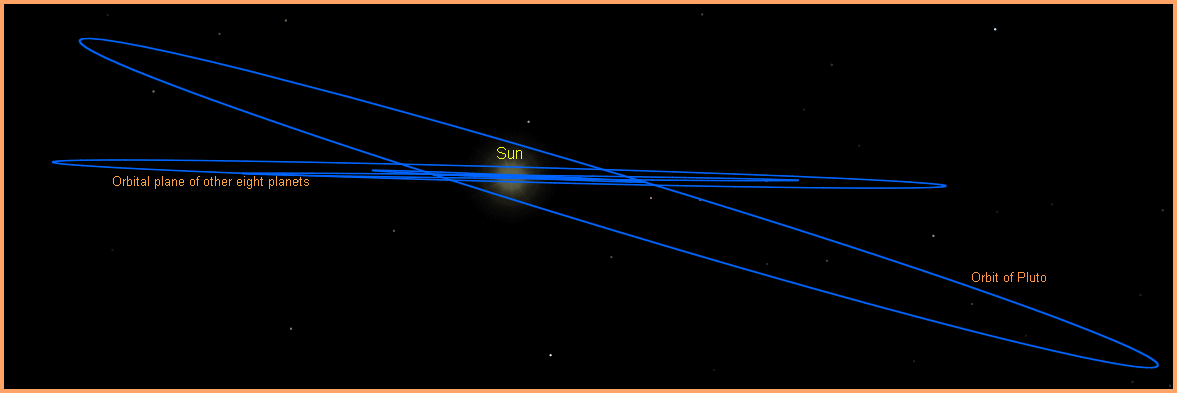
In 1978 Pluto was found to have a companion. It was given the name Charon, for the boatman who ferried the souls of the dead to the underworld. Officially classed as a moon of Pluto, Charon is considered by many as part of a double planetary system, since it is fully half the size of Pluto, and the two bodies whirl about each other in a mutually synchronous orbit, always keeping the same face towards each other. The pair take 248 Earth years to orbit the Sun together.
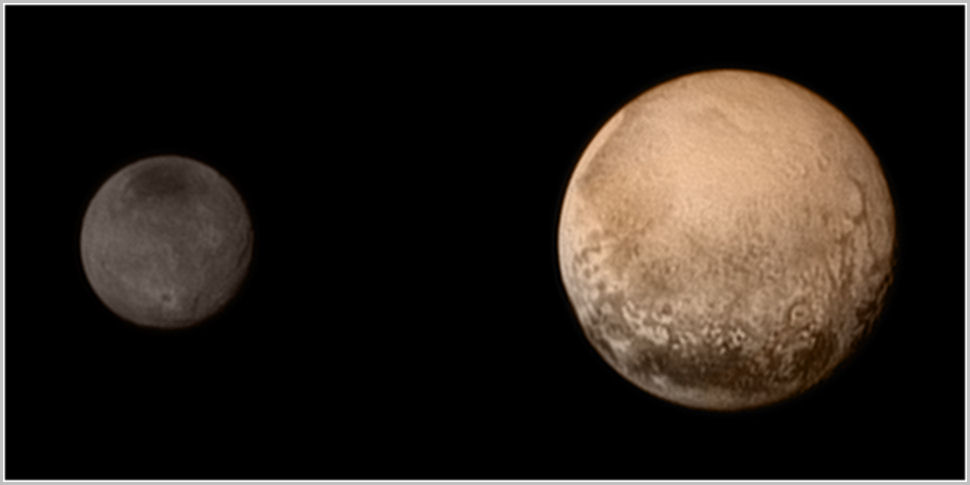
In May, 2005, astronomers using the Hubble Space Telescope discovered two new moons orbiting Pluto. The innermost of the new moons was named after the mother of Charon, the goddess of night, Nyx. Since there was already an asteroid with the same name, the Egyptian spelling, Nix, was used. The outermost moon was named after the nine headed sea serpent, Hydra, who guarded the gates of the underworld against intruders. Finally, in 2015, NASA's New Horizons spacecraft found two more very small moons orbiting Pluto. They were named Styx, after the river that separated the underworld from the land of the living, and Kerberos, the monstrous, three headed dog that patrolled the gates of Hades and prevented the dead from leaving.
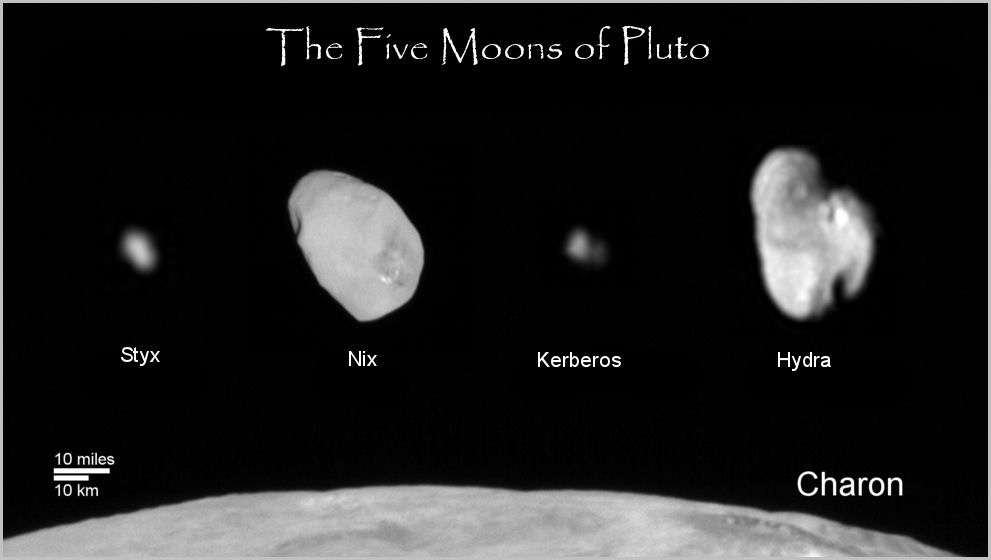
|
|
|
| SOL | MERCURY | VENUS | EARTH | METEORS | MOON | MARS | ASTEROIDS | JUPITER | SATURN | URANUS | NEPTUNE | PLUTO | COMETS |
|
|
|